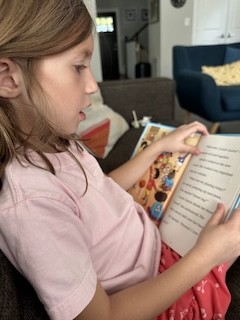| Teacher question:
|
Shanahan response:
When people tell you that you should adopt a model or approach that they like because it is more “effective” you should ask to see their evidence.
I went looking for research on “push in” interventions. There is, of course, a lot of research data showing that various pull out interventions have worked at improving reading achievement. However, I could find only one study on push in interventions and it was carried out 15 years ago. It was very small and preliminary study that did no more than “suggest the possibility” that such an approach could be beneficial. Too little to go on.
(If your colleagues have found any such studies, please send them along).
There seem to be two different versions of push in reading.
One is the idea of the teacher who essentially “shadows” certain students providing them with assistance as necessary (e.g., keeping them attentive, adding explanation when needed, closely monitoring student seatwork, etc.). The point of this kind of push-in teacher is to ensure that the struggling students fully participate in and benefit from the regular classroom teaching. (This model seems to be most common with physical handicaps and severe cognitive difficulties, but I’ve seen it with minimal disabilities as well. More on this in a minute,)
Another, version relegates the is the push-in teacher to the role of parallel teaching. This teacher works with a small group of students in their classroom, providing them with alternative instruction. While, the classroom teacher works with the more advantaged small groups, the push-in teacher is dealing with the more challenged teachers. With this approach kids don’t lose time walking down the hall to the intervention teacher, and they don’t suffer the discomfort and disconnect from classmates common with pull-out programs.
I’ve personally only seen any push-in model in practice once in my career… and it was one of the worst observational experiences of my life. The problems were so stark as to be the stuff of goofball comedy.
The push-in teacher instead of helping her charges to better understand and learn from the classroom instruction, seemed to be in competition with the general education teacher. At one point she literally got up and erased what the teacher had written on the chalkboard! Obviously, a horrible example, so horrible that I can’t imagine that it could go any worse in your district. In any event, if you decide to go the push-in route, you’d better make sure the teachers can work well together and that they have a shared vision of what’s needed to advance children’s learning.
For reading instruction, the alternative teaching approach makes the greatest sense. If the classroom teacher is devoting an hour to small group teaching, then each of the three groups might get about 20 minutes of attention per day. With the push in model, perhaps the two more advantaged groups could get 30 minutes each, and the strugglers could receive a full hour of actual teaching. That could be terrific.
With the neediest kids, I usually advise going with approaches that have done especially well in the research studies. Given the dearth of evidence on this approach—and the large amount of positive support for various kinds of pull-out efforts—I’d not argue for push in.My hunch is that if I could pull out a small group and teach them separately, I could do more successful job of teaching these kids effectively and could build better upon the classroom teaching.
However, if your colleague carried the day, I’d insist that the alternative teaching route be taken, and make sure that the children served by the push-in teacher receive substantially more instruction than would usually be possible.
Maybe push in can work even better than pull out, but I will need at least a small amount of research that actually supports this alternative. Until then, I’d recommend using any approach that maximizes the amount of teaching that the children are going to receive.







Comments
See what others have to say about this topic.